René Lalique: Master Glassmaker and Genius of Jewelry
The name “Lalique” can evoke many things: the brilliance of jewelry, the beauty of the transparency of glass and crystal.

Before being a brand, this was the name of a brilliant artist, René Jules Lalique, who revolutionized jewelry.
René Jules Lalique was born on April 6, 1860 in Aÿ in Champagne, in the Marne. Originally a master glassmaker, he revolutionized the French jewelry industry during the Art Nouveau period with his talent.
His passion for jewelry and his desire to create were expressed at an early age through his drawings. As a teenager, Lalique sketched jewelry and works with jewellers as a designer. Despite his talent, he encountered obstacles and reluctance, especially from the jeweler Vuilleret, who said to him: “You want to make jewelry designs, but it will lead to nothing! You will see that in two or three months, you will not know what to invent and, arrived at the end of your roll, you will be forced to stop! »

Dragonfly brooch – Gold, enamel, chrysoprase, chalcedony, moonstones and diamonds – France, circa 1897-1898
He became famous in particular for his amazing jewelry, but also for his talents as a master glassmaker and his original creations of perfume bottles, candlesticks, clocks and car radiator caps.

Dragonfly radiator cap, molded glass, René Lalique circa 1928
At the age of 12, René Lalique won his first design competition in Paris. Four years later, he began an apprenticeship in jewelry making in Paris, then attended Sydenham Art College in London for three years. After returning to France, he worked for Aucoc, Cartier, Boucheron and others.
In 1882, he became a freelance designer for several Paris jewelry houses and four years later launched his own jewelry brand. He took over the workshop of the jeweler Jules Destape, place Gaillon in Paris.
He created innovative pieces for Samuel Bing’s new Paris boutique, “Maison de l’Art Nouveau” and began exhibiting his work under his own name in 1894.

Necklace in enamelled gold, diamonds and pearl, signed René Lalique, France between 1899 and 1901
His first gold jewelry pieces were inspired by Antiquity and Japan. He integrated new materials into his pieces, breaking the jewelry codes of the time: he mixed gold and precious stones with ornamental stones such as mother-of-pearl, ivory, horn, lapis, opal or even enamel and glass. He often chose stones for their strength, light and colors.
He was also inspired by fauna and flora, playing with animal themes such as the peacock or insects: dragonflies, cicadas or butterflies. The same goes for imaginary and fantastic beasts like fairies that he liked to stage in his creations. He innovated by using materials that were not very popular in jewelry at the time: glass, enamel, leather, horn and mother-of-pearl.

Gold and enamel cicada brooch by René Lalique, circa 1902
He often prefered fine stones to precious stones. The introduction of volume in his works is facilitated by his knowledge of modeling. He designed his models and had them made by a team of chisellers, sculptors and enamellers, whom he carefully recruited.
Among the many creations of René Lalique, the most famous are corsages ornaments, necklace plates as well as combs, which were the most common. But the ones he liked the most, despite the low demand, were tiaras and diadems.

Tiara and corsage ornament, René Lalique, 1903 -France © Victoria and Albert Museum, London
In 1888 he registered his own hallmark “RL” and engraved the original creations made in his name from that date onwards with his letters.

He became interested in glass as an artistic vector early on and in 1890, he set up a glass workshop at the 20, rue Thérèse in Paris where he began to experiment with the use and mixing of glass and metals in jewelry.
His first jewels using this material were exhibited in 1900 at the World’s Fair, which brought him international fame and affirmed his style, particularly through the appearance and decoration of his unique stand.

Lalique stand, Universal Exhibition, 1900
After the end of the First World War, Lalique’s colorful and fantastic jewelry was no longer in fashion, and the designer decided to convert to the Art Deco style in 1920. He created many art and luxury objects, which became everyday objects, such as vases, cups, candlesticks, perfume bottles, and the famous radiator caps for the Citroën 5CV car.

“Poisson” vase in green tinted glass, signed René Lalique Circa 1921
He also created the decorations for the dining cars of the Côte d’Azur Pullman Express and the first class dining room of the Normandie liner, as well as the fountains of the Champs-Élysées.
René Lalique was also the first to sculpt glass in large monumental works, such as the doors of the Albert-Ier Hotel in Paris, or the fountains of the Champs-Elysées roundabout, which were dismantled in 1958 and have since disappeared.

Decorative motif of the “Fontaine Poissons” also called “Fontaine Perles” by René Lalique circa 1935
After opening a boutique in the Place Vendôme in Paris, he began designing glass perfume bottles, being the first to imagine marketing this emblem of luxury and refinement in an equally splendid packaging. In the same year, the Museum of Decorative Arts in Paris included Lalique in its collections.

R. Lalique signature on glass
René Lalique finally passed away on May 1, 1945. That same year, his son Marc started working with crystal in their workshops and took over after him. The House of Lalique still exists today.
Today Lalique is considered one of the greatest artists of Art Nouveau and a museum is dedicated to him in Wingen-sur-Moder in Alsace. It's in that same place that René Lalique had opened in 1922 his glass factory whose tradition continues today. It is the only Lalique factory in the world.

Lalique Museum, Wingen-sur-Moder in Alsace
If you are interested in Lalique or Art Nouveau jewelry, don’t hesitate to discover what Les Pierres de Julie has to offer in store…
We are also available for any free expertise of your jewels, for that you can send an email with your photos to contact@lespierresdejulie.com.
Whether you're interested in buying a piece of jewellery or a stone, a free jewelry appraisal or jewelry resale, Pierres de Julie welcomes you to its Parisian boutique in the Village Suisse, a stone's throw from the Ecole Militaire and the Esplanade des Invalides.
- Choosing a selection results in a full page refresh.
Thanks for subscribing!
This email has been registered!






